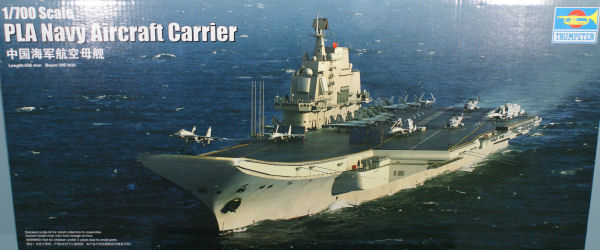
Trumpeter 1/700 PLA Navy Aircraft Carrier Kit First Look
by Michael Benolkin
| Date of Review | July 2012 | Manufacturer | Trumpeter |
|---|---|---|---|
| Subject | PLA Navy Aircraft Carrier | Scale | 1/700 |
| Kit Number | 6703 | Primary Media | Styrene, PE |
| Pros | Nice exterior detailing, distinctive subject | Cons | See text |
| Skill Level | Basic | MSRP (USD) | $79.95 |
First Look
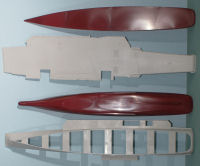 |
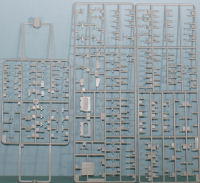 |
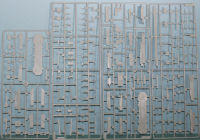 |
 |
 |
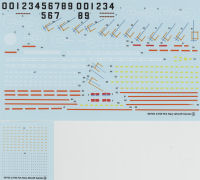 |
In the 1980s, the Soviet Union wanted to add a more capable aircraft carrier into its fleets to embark CATOBAR (catapult-assisted take off/barrier arrested recovery) or STOBAR (short take off/barrier arrested recovery) aircraft. To that point, the Soviets had several carriers capable of embarking only VTOL (vertical take off and landing) aircraft, namely the Yak-38 Forger. The United States operates both CATOBAR carriers such as the Nimitz-class as well as STOVL (short take off/vertical land) carriers such as the Wasp-class. The Royal Navy had retired their CATOBAR carriers and currently operate STOVL carriers such as the Invincible class. One unique twist in the British design is the ski jump designed into the front of the flight deck. Harriers that perform a rolling takeoff from the Wasp-class gain additional payload/less fuel burn over vertical takeoff. With the added ski jump on the bow of the Invincible class, Harriers not only get a good rolling take-off, the ski jump allows the aircraft to take off with even more fuel or payload.
The Soviets developed an innovative STOBAR design and started construction of the Riga. This vessel was renamed Leonid Brezhnev when she was launched, renamed again as Tblisi during sea trials, and is now known as Admiral Kuztnetsov today. The Kuznetsov embarks the Su-33 (Su-27K) Naval Flanker though variants of the MiG-29 and Su-25 were also developed for STOBAR operations (the Indian Navy has selected the MiG-29K for its carrier and the Russian Navy has also announced that the MiG-29K will embark on Kuznetsov in the next few years). The Kuznetsov was to be the first-in-class for a number of carriers for the Soviet Navy, but with the fall of the Soviet Union, the Russian Navy opted not to complete the nearly-finished second-in-class, the Varyag. Enter China...
In 1998, six years after the fall of the Soviet Union, the empty hull of the Varyag was sold at auction. A Chinese company purchased the hull to turn it into a casino or amusement park. What followed was really interesting to observe. While the Chinese were obligated to get the hull out of the Ukrainian shipyard, they didn't have permission to take the hull through the Turkish-controlled Bosphorus strait from the Black Sea into the Aegean Sea and eventually into the Mediterranean. The hull and her tow vessels circled the Black Sea for 16 months before permission was finally granted. Once the Varyag finally arrived in China in 2002, engineering teams began inspections and developed plans to fit the vessel for its intended purpose. A decade later, the PLA Navy's first aircraft carrier, rumored to be named after Admiral Shi Lang, is now undergoing sea trials.
One essential element of this new aircraft carrier is its aircraft. During the decade of development of Shi Lang, the Chinese aircraft industry had reverse engineered the Su-27 Flanker and built the J-11, then provided the design with an indigenous multi-role capability as the J-11B. You might question the viability of such copies, but aviation historians know the long history of China's improvements on Soviet designs. The MiG-19 was a capable aircraft on paper, but it was a dangerous aircraft in service and was quickly relegated to the Warsaw Pact and allied nations. China received the MiG-19 and started production of their own version, the J-6, and this aircraft was far safer and more capable than its Soviet brother. In fact, China produced the only two-seat trainer version of the MiG-19 as well as a redesigned strike version called the Q-5 Fantan. It shouldn't be any surprise then that China can take a design and make it better. It was a surprise, however, when China had produced a copy of the Su-33 Naval Flanker based on its J-11 developments as well as some interesting reverse engineering. This new aircraft is called the J-15 Flying Shark and has started flight testing aboard the Shi Lang. Of course the Chinese pilots are going to have the same steep learning curve for carrier flight operations as other nations who have also adopted carriers of one type or another. Here is an interesting wave-off video clip from the Kuztensov of one of their embarked Su-33 Flankers.
If the box art on this kit is any indication, China is definitely proud of their first aircraft carrier. I've not seen box art from Trumpeter that looks more like a photograph than a graphic before and it won't be long before that image becomes reality. It also isn't a surprise to see this kit coming from Trumpeter as they had already produced the Kuznetsov in 1/350 and 1/700. The Shi Lang has also been released in 1/350 scale, though the real vessel had not yet gone to sea at that time. Trumpeter has added additional tooling to render the distinctive island, defensive systems, and one new aircraft to the deck over its Russian counterpart.
The kit is molded in light gray styrene and presented on 29 parts trees plus two options for a lower hull molded in red styrene, one display stand molded in black styrene, one sea display option molded in clear blue vacuformed plastic, and one fret of photo-etched details.
The first step in the instructions have you modify the flight deck and upper hull to reflect the changes made by the Chinese shipyard. A number of deck fittings are to be removed and other molded-in details are to be filled (repaired) while new holes are also identified for drilling. While this might sound complex, it won't take but a few minutes to work through these changes.
Construction is straightforward as you add various sponsons to the hull for lifeboat stowage or mounting of defensive systems, elevators, and structural details. Among the features and options of this kit:
- Choice of full-hull or waterline hull display
- Display stand for full-hull model
- Display base for waterline option
- Positionable elevators
- Positionable HF antennas
- Positionable jet blast deflectors (three)
- Distinctive armament fitting
- Distinctive island w/new radars/sensors
- 16 x J-15 (Su-33)
- 4 x Ka-28 with choice of extended or folded rotor blades
- 2 x Ka-31 with choice of extended or folded rotor blades
- 2 x Z-8 helicopters with choice of extended or folded rotor blades
The kit comes with a comprehensive marking sheet for the flight deck and around the hull which clearly gets its origins from the original Kuznetsov release (with the various hull numbers that were carried as the ship went through its numerous naming stages. There is a second sheet unique to this release that provides national markings for the embarked PLAN aircraft.
As with the Kuznetsov, Trumpeter has really done a nice job with the Shi Lang and this kit provides the naval modeler with a nice example of China's entry into naval carrier operations. Will this vessel be fully combat capable, there is no doubt in my mind. Will it hold up over time? That will be the question as this is a rather unique vessel built around an abandoned hull, but at best the engineers will be able to keep this ship in service with minimal problems. At worst, this vessel will provide pilots and crews with valuable experience while the prolific Chinese shipyards produce all-new carriers incorporating the lessons learned from this example.
My sincere thanks to Stevens International for this review sample!







